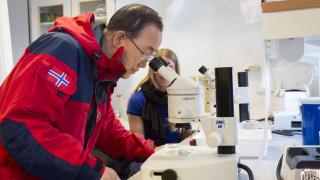
Every day, more than 50,000 large ships ply the world’s oceans, delivering around 90 per cent of global trade. They provide a cost-effective and energy-efficient way to transport the goods and commodities that underpin the global economy and sustain global society.
Of course, it is incumbent upon the shipping industry, reliant as it is on fossil fuel to power its engines, to make its own contribution towards the reduction of greenhouse gas emissions, and to ensure that shipping becomes progressively cleaner and greener.
The International Maritime Organization (IMO), the UN specialised agency which sets global standards for international shipping, has shown its commitment and leadership, through its member nations, to creating the legal and technical framework to address shipping’s emissions.
As parties to the UN Framework Convention on Climate Change meet in Paris for pivotal discussions on a new climate change agreement, it is worth recalling that the IMO is, to date, the only international organisation to have adopted global legislation to significantly reduce carbon dioxide (CO2) emissions from a particular industry.
It should also be noted that, according to figures contained in the IMO’s most recent study of greenhouse gas emissions, the total contribution from international shipping to global emissions in 2012 was just 2.2 per cent. However, the IMO has always recognised the need to ensure that this contribution to global emissions, is addressed.
Efforts to reduce airborne emissions from ships took a major step forward in 1997, with the adoption of the Protocol to the International Convention for the Prevention of Pollution from Ships, which currently regulates air emissions from approximately 95 per cent of the worlds’ merchant shipping tonnage. Further to this, more stringent global measures to reduce emissions from individual ships were established through amendments to the Protocol, which entered into force in 2013.
These measures include the Energy Efficiency Design Index (EEDI), which includes specific reduction goals for newly built ships. The CO2 reduction level (grams of CO2 per tonne mile) for phase one, which began in January 2015, is set to 10 per cent and will be tightened every five years to keep pace with technological developments. From 2025, applicable ships types must be built to be 30 per cent more energy efficient than the baseline (which is based on the average efficiency for ships built between 1999 and 2009).
There is also the Ship Energy Efficiency Management Plan (SEEMP), which mandates that a ship-specific plan must be developed, and should consider how to increase its operational energy efficiency, thereby reducing fuel consumption and CO2 emissions.
Studies indicate that through compliance with IMO regulations, shipping can grow with the global economy and reduce emissions at the same time. Effective implementation of EEDI and SEEMP can lead to significant reductions in CO2 emissions from international shipping, even given the projected increases in international seaborne trade in coming decades.
Alongside these technical requirements, the IMO also adopted a regulation calling for technology transfer and support for developing countries to implement energy efficiency measures.
To support this process, the IMO is executing the recently-launched Global Maritime Energy Efficiency Partnerships Project. Run in partnership with the Global Environment Facility (GEF) and the United Nations Development Programme, this project will focus on building capacity to implement technical and operational measures in developing countries, where shipping is increasingly concentrated. Direct funding from the GEF of $2m has been allocated for the initial two-year period.
Through the decades, the IMO has shown its commitment to combating climate change and has a solid track record of solving problems with complex multinational, by developing measures that are applied universally to the world’s most international of industries, shipping.
As its record to date so clearly demonstrates, it is evident that the IMO is the appropriate international body to continue work to address greenhouse gas emissions from international shipping.
Stefan Micallef is Director, Marine Environment Division, International Maritime Organization

















